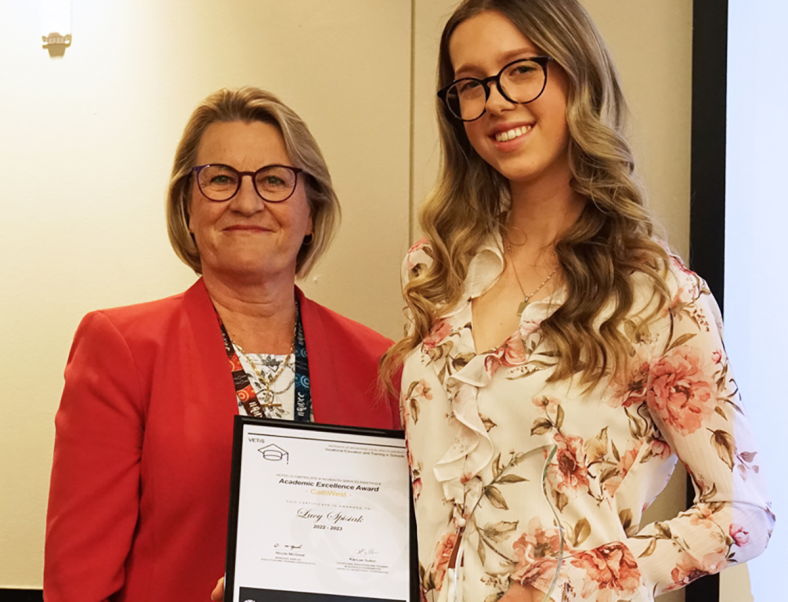Torbreck Vintners (Torbreck) is one of South Australia’s most acclaimed wine producers. From its home in the Barossa Valley, Torbreck now exports shiraz and Grenache wines to 43 countries.
India is a fast-growing market for Torbreck. Thanks to the Australia-India Economic Cooperation and Trade Agreement (AI-ECTA), it’s now getting bigger. On entry into force, tariffs on premium imported wine will fall from 150% to 75%.
According to Sacha Timaeus, Export Manager at Torbreck, AI-ECTA will give premium Australian wine an instant competitive advantage.
‘The trade agreement is India’s first with a major wine-exporting country,’ he says. ‘It means we will be the first cab off the rank in terms of easier access to India’s wine market. The tariff reduction will give Barossa wines a real competitive edge over wines from Europe and South America.
‘Today there is a burgeoning, young, professional class in India. Their tastes are changing. Wine drinking has status, and there is growing demand for premium wine in India.’
Barossa vineyards eye India’s middle class
The Torbreck Vineyard was founded in 1994, although the company’s ungrafted vines stretch back to 1858. Today, the company’s Rhône-style reds are globally popular, and the vineyard has helped build the Barossa brand around the world.
Torbreck currently produces around 70,000 cases of wine per year – mainly premium shiraz and Grenache.
The company’s first foray into India started 15 years ago. But, according to Timaeus, high tariffs and burdensome regulation made it ultra-hard for a small label to make progress.
‘Our cost of operations was very high,’ he says. ‘It cost A$5,000 annually to register every sku, and the import tariff was 150%. So, the environment for selling wine was very tricky – especially if you were a small business with low volumes.
‘However, India is a sleeping giant. There’s a new middle class. And there is also a growing professionalism in India in terms of the skills needed to handle high quality wines. We thought: “One day there could be trade agreement: if that happens, we will give it another go”.’
AI-ECTA lowers tariffs on premium wines
Torbreck’s moment arrived in 2022. Australia became the first G20 economy to sign a free trade agreement with India. Australian agriculture, food and beverages benefited from reductions in India’s exceptionally high tariffs.
On entry into force, wine that arrives in-market priced at US$15 per bottle or more will see the 150% tariff immediately reduced to 75%. Annual tariff reductions will then kick in, with a final tariff rate of 25% after 10 years.
Mid-range Australian wines also benefit. Wine priced between US$5-15 will see tariffs fall to 100% immediately, and then 50% after 10 years.
‘This tariff reduction is great for Torbreck,’ says Timaeus. ‘We estimate that our end prices in India will fall by about 8%. This gives small producers a real advantage compared to wines from South Africa, France and Italy.
‘Also the MFN [Most Favoured Nation] clause was a brilliant piece of negotiation. It means that if the EU ever negotiates a better tariff reduction, we will benefit from that as well.’
Moment ‘ripe’ for Australian labels
Timaeus says that new exporters are competing for long-term gains. Australian brands will now enjoy a first-move advantage with India’s middle classes. This will help build loyalty to Australian brands at a critical moment in India.
‘Attitudes are changing fast,’ he says. ‘Young professionals are becoming more experimental. Many have taken degrees in the US, Europe or Australia. They are gravitating away from hard spirits and turning to wine drinking.
‘The AI‑ECTA will probably trigger much greater interest in Australian wine,’ he says. ‘Once the ECTA comes into force, more entrepreneurs in India will want to start importing. Just the announcement [of the AI‑ECTA] in 2022 triggered a lot of interest in South Australian vineyards.’
Austrade helps make trade visits viable
South Australian trade officials are working with Austrade advisers to build an appreciation of Australian wine in India.
‘We are already in a great position. Australian labels currently deliver 44% of imported wine in India, but we can’t rest on our laurels,’ says John Southwell, Trade Commissioner, Mumbai. ‘We work with consumer groups and the hospitality sector to showcase the depth and sheer diversity of Australian premium wines.
‘Australian wineries seeking to take advantage of the AI‑ECTA need to be patient and persistent. India is a long-term play and those that stay the course, tell their story and are able to work across price segments will benefit.
Austrade also helps potential exporters make vital contacts when they travel to India. In 2022, South Australia trade officials organised a stand at the ProWine exhibition in Mumbai. Austrade advisers helped Torbreck to attend and make connections.
‘With India it really does matter if you have “boots on the ground”,’ says Timaeus. ‘We are a small vineyard. Support from Austrade and the South Australian Government made it made it feasible for us to go to India. They have helped us fly the flag for Australian Wines in India.’
Torbreck’s gateway to India
Mumbai is India’s wine capital, and it has become Torbreck’s gateway to India. With an importer onboard, Torbreck plans to grow in other areas, including Goa, Bangalore and Hyderabad.
‘When we first met our importer, I thought some of their forecasts were ambitions. However, they have exceeded anticipated volumes. And they achieved that in a very short space of time.
‘We are delighted with the progress we have made. India is a slow burner, but we now have this foot in the door, and we are first in and best dressed. I think we will build good brand equity for Australian wine.
‘Liberalisation will continue. The market for beverages in India now is truly sophisticated. Niche markets – like craft beer – are exploding. Premiumisation is really taking off and our prospects will snowball.’








